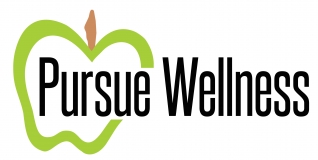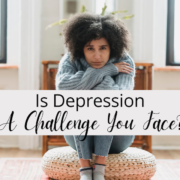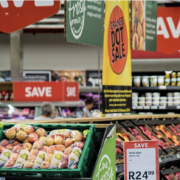Vital For The Human Body
Sodium, or table salt, has a rough history. Food labels trumpet their lack of it. Doctors caution using it. Everyone seems to be avoiding it.
But at what cost? Given the messages touted in the media, you might think that sodium is toxic. But nothing could be further from the truth. Sodium is vital for the human body to survive!
Sodium is a crucial electrolyte stored primarily in the fluid that surrounds all our cells. Our kidneys use electrolytes to regulate the amount of water in the body. This is an important job as our bodies are about 60% water.
When we have high levels of sodium, the kidneys retain water. When we have too little sodium, the kidneys release more water.
You’ve probably experienced this dynamic if you’ve eaten too many chips or popcorn or fast food and found your hands or ankles swollen the next day. Sodium levels that are too high can promote arterial constriction or narrowing. This leads to high blood pressure.
What Does The Science Say?
Fear of high blood pressure often leads people to eliminate salt from their diet altogether. But what do we find about the actual impact of reduced sodium consumption in medical studies?
You might be surprised. There is very little evidence to show that reducing salt intake improves blood pressure for the vast majority of people.
- A Belgian study of 3600 adults published in the Journal of the American Medical Association earlier this year found that those consuming the least salt over an 8-year period were the most likely to die from heart disease.
- On the other hand, it’s been well demonstrated that reducing sodium may increase insulin resistance which leads to diabetes.
- A more recent study likely zeros in on the truth for most people … it’s about moderation. This study looked at sodium intake relative to cardiovascular disease and mortality. They found moderate sodium intake (4-6g/day) resulted in the lowest risk of CVD onset and death, as compared to both too little (< 3g/day) and too much (>6g/day) sodium intake. They even offer a cute, 3-minute video that summarizes the results.
This is another example of national medical guidance that assumes we are all the same and doesn’t hold up to scrutiny. Yes, there are some individuals who are particularly “salt sensitive” – who have a blood pressure increase in response to moderate sodium intake.
Those with kidney disease usually benefit from reduced sodium intake. But, there are many factors that play into this sensitivity, especially insufficient potassium.
What Contributes To Hypertension?
Other key factors include lack of exercise, low melatonin, poor sleep, and magnesium deficiency. Poor blood sugar control is also a factor, especially from a diet high in refined carbohydrates (e.g. pasta, bread, chips).
The more important factor at play here for most Americans is low potassium. This critical electrolyte is primarily stored inside our cells. Potassium is just as important as sodium in the body’s effort to regulate fluid levels and movement.
If our body can pump sufficient potassium into our cells, then it can keep most sodium safely out of our cells. The result? Healthy, non-acidic cells and easy excretion of excess sodium. Stable blood pressure is, in large part, about a careful balance across all our electrolytes
The problem is that the average American diet is very high in sodium while also low in potassium and magnesium. In fact, no food in nature has more sodium than potassium. Not a single one. This situation is a man-made phenomenon courtesy of fast foods and convenience foods which are overloaded with salt.
Dietary Choices
If you eat real foods with an emphasis on vegetables and fruits, you likely won’t have any problems with this balance. When eating whole foods, I believe we can rely on our taste buds and cravings to guide us in how much salt we uniquely need each day. Then use the salt shaker for flavor and give your body the electrolytes it needs!
Does the typical American eat too much sodium? Absolutely. Ultra-processed foods – those that are packaged to sit on the shelf long-term or cook quickly – contain significantly more sodium.
The solution is moving away from ultra-processed and fast foods while adding potassium-rich foods to our diet. Most people think of bananas, but many foods are even higher in potassium. These would include avocado, cantaloupe, sweet potato, sun-dried tomatoes, Brussels sprouts, and spinach.
My challenge to you is to not accept the fate of “blood pressure medication for life.” Remember that some drugs are truly critical, but they are all synthetic toxins. Blood pressure medications have real side effects.
Perhaps you have reduced or eliminated salt in hopes of lowering your blood pressure. Then I would ask, are you taking more than one blood pressure medicine? In that case, something isn’t working. I have helped clients reduce their need for medicine by finding the true root cause of their hypertension and supporting them in making changes.
Better Choices
When you use salt, I recommend unrefined, natural sea salt. This would be Celtic Sea Salt, Redmond’s Real Salt, or Himalayan Pink Salt. These will give a lower level of sodium and a mix of trace minerals.
More importantly, you avoid the bleaching chemicals added to typical table salt. Natural salt is not white. If the salt in your container is white, it has been treated and is not healthy.
To make sure you get the natural iodine you need daily, enjoy some seaweed snacks a couple times a week. Another option is to use some natural kelp granules in your meal prep.
I put these on my salad or stir-fry or blend them in my oil and vinegar dressing. They are also easy to find in the “healthy” section of most grocery stores.
Make a commitment to yourself to pursue wellness by including appropriate levels of sodium in your diet. You may be amazed by how wonderfully your body and your energy level flourishes.










